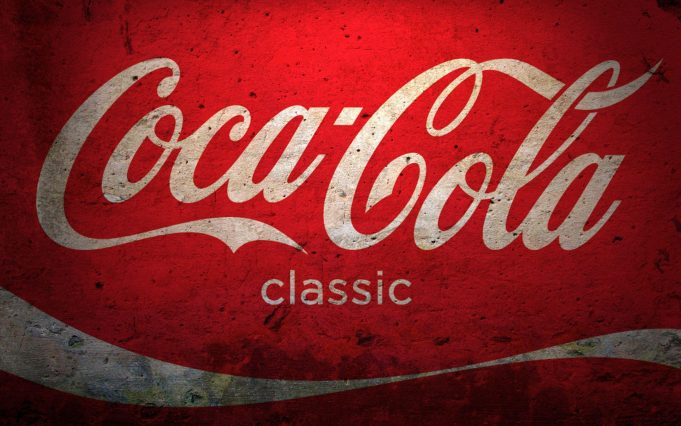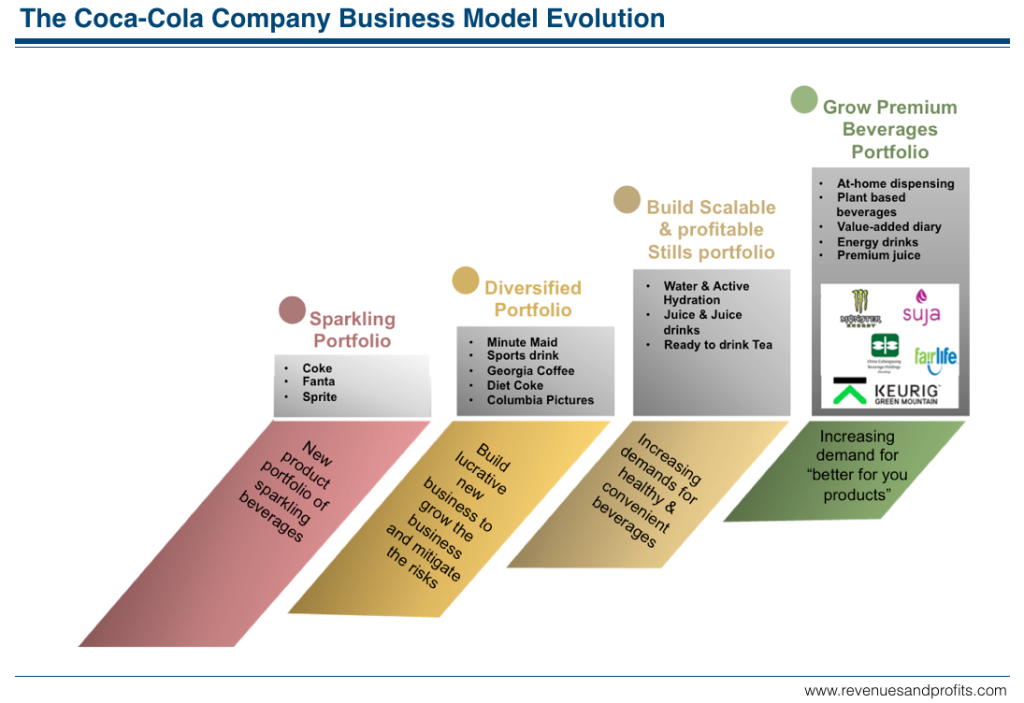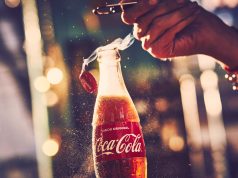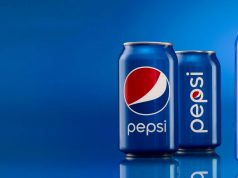This article is about how Coca-Cola Company makes money. Firstly, we present our analysis of Coca-Cola business strategy and its impact on Coca-Cola Business Model. Then, we explain the business segments of Coca-Cola and how the company generates revenue from each of those segments. Finally, we share the revenues, the profits, and the profit margins of Coca-Cola for 2014.
The Coca-Cola Company (“KO”) is the world’s largest beverage company with operations in more than 200 markets. It markets more than 500 nonalcoholic beverage brands, primarily sparkling beverages but also a variety of still beverages such as waters, enhanced waters, juices and juice drinks, ready-to-drink teas and coffees, and energy and sports drinks. The company operates through a network of company-owned or -controlled bottling and distribution operations as well as independent bottling partners, distributors, wholesalers and retailers.
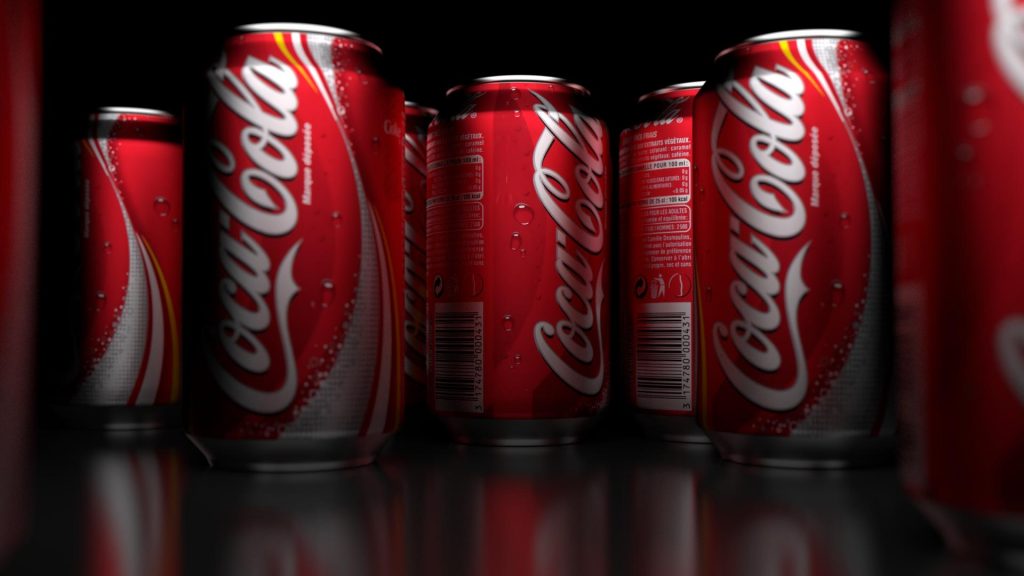
Understanding Coca-Cola Company Business Model
Founded in year 1886, Coca-Cola Company today has become one of the world’s largest beverage company. Over the last 129 years it has evolved its business model from sparkling beverages business to diversified business, including stills and now premium beverages.
It is important to understand the key components of its core business model that revolves around following two key tenets:
- Building global brands
- Leading an unmatched global system of bottling partners
Coca-Cola Company Focus On Building Global Brands And Its Impact On Revenues
Coca-Cola Company that started as a sparkling beverage producer and distributor witnessed unprecedented demand for its flagship product Coca-Cola. Main ingredients of Coca-Cola and its other sparkling beverage variants that include Sprite, Fanta and Diet Coke are water, nutritive (HFCS- High Fructose Corn Syrup and Sucrose) or non-nutritive sweeteners (aspartame, acesulfame potassium, saccharin, cyclamate, and sucralose) and syrups. The key to selling these beverages lies not in the ingredients but in the marketing acumen of 129 year old company. Coca-Cola today has more than 20 one billion dollar (in sales) brands. It has built these brands by understanding the needs of the customers and launching products that meet or exceed customers’ expectations.
Today global Nonalcoholic Ready To Drink (NRTD) beverages industry is witnessing key changes in its consumer base. There is increasing demand for healthy alternatives to sparkling beverages from growing teen population with higher spending capacity. The company has broadened its array of lower-calorie and lower-sugar sodas, introduced smaller container sizes, and added healthier stills beverages to its brand portfolio, ranging from iced tea to flavored water. Its efforts are supported by incremental media investments, high quality marketing programs such as “Share a Coke” and custom emoji program with Twitter.
Coca-Cola spent $3.5 Billion in advertisement in year 2014 and maintained its 3rd position in world’s best global brands. It is also building partnerships and acquiring stakes in companies that will help it serve “better for me products” to changing customer base. To build this high growth platform Coca-Cola has acquired 16% stake in Keurig for the production and sale of its branded single-serve, pod-based cold beverages and 16.7% stake in Monster beverages. It has also recently launched high protein low sugar milk variant Fairlife to cater to millennials that want better product at a premium.
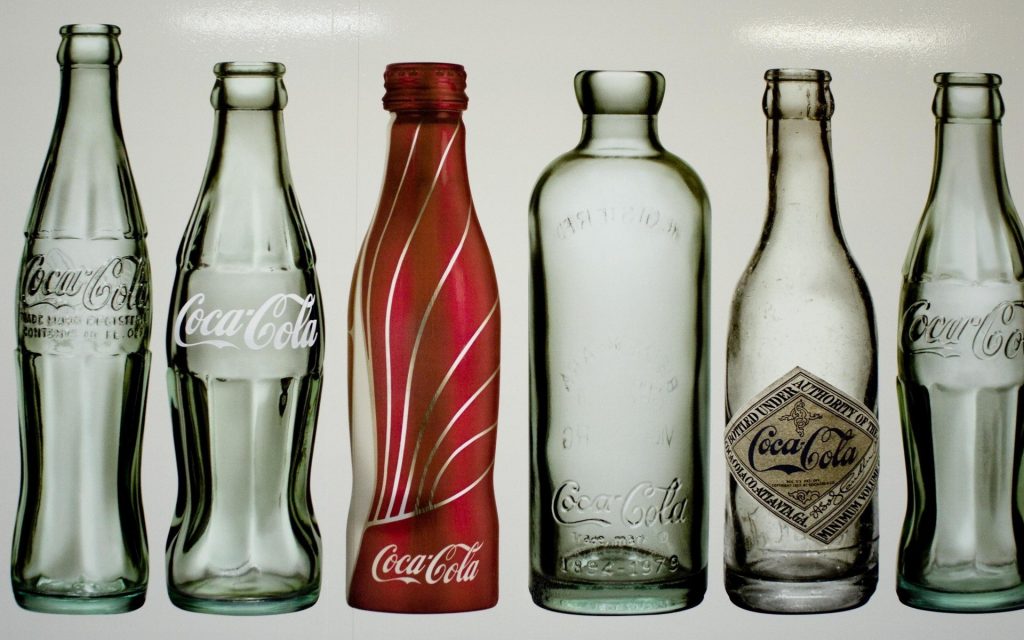
Coca-Cola Company Focus On “Leading An Unmatched Global System Of Bottling Partners” And Its Impact On Revenues
The company makes its products available to consumers throughout the world through network of Company-owned or -controlled bottling and distribution operations as well as independent bottling partners, distributors, wholesalers and retailers. Coca-Cola Company has been operating a franchised distribution system since 1889. In this franchised distribution system, company only produces syrup concentrate which is then sold to various bottlers throughout the world who hold an exclusive territory. The franchise model allows the company to avoid costs associated with manufacturing, storage, and distribution. It also enables the company to scale its business faster. Bottling partners are responsible for meeting customer demand through manufacturing, packaging, distributing, and merchandising the finished branded beverages to customers. Bottling partners are also responsible for customer marketing and outlet execution. Network system helps Coca-Cola Company offer its consumers the right product in the right pack at the right price to suit the consumer occasion.
How Coca-Cola Company Makes Money
Coca-Cola Company operates its business through Concentrate Business and Finished Products business.
In the concentrate business, the company generates revenues by selling concentrates and syrups (including fountain syrups) to authorized bottling partners. Bottling partners either combine the concentrates with sweeteners (depending on the product), still water and/or sparkling water, or combine the syrups with sparkling water to produce finished beverages. The finished beverages are packaged in cans, refillable and non-refillable glass, and plastic bottles. They are then sold to retailers directly or, in some cases, through wholesalers.
In the finished products business, the company generates revenues by selling sparkling beverages and a variety of still beverages, such as juices and juice drinks, energy and sports drinks, ready-to-drink teas and coffees, and certain water products, to retailers or to distributors, wholesalers and bottling partners who distribute them to retailers. In addition, company manufacture fountain syrups and sell them to fountain retailers, such as restaurants and convenience stores who use the fountain syrups to produce beverages for immediate consumption. The company also gets revenues by providing marketing support and selling other nonalcoholic beverage brands that include DPSG, Nestle, Aujan industries and Monster beverages through licenses, joint ventures and strategic partnerships. The company has also entered into at home dispensing market by its partnership with Keurig for the production and sale of its branded single-serve, pod-based cold beverages.

The Coca-Cola Company Business Segments
The firm reports its activities in two business segments that sell sparkling and stills beverages through 6 operating segments. A brief description of these Operating segments is as follows:
Coca-Cola operating segments are primarily based on geographic responsibility. The Bottling Investments operating segment includes all company-owned or consolidated bottling operations, regardless of geographic location, except for bottling operations managed by CCR, which are included in the company’s North America operating segment.
Coca-Cola Company FY 2014 Revenues By Operating Segments
In FY’14 (fiscal year ended December 31, 2014), Coca-Cola Company generated $45.9 billion of total revenues. Of these total revenues, Coca-Cola Company generated
- $21.5 billion revenues, 46.7% of the total, from the North America operations
- $7.1 billion revenues, 15.5% of the total from the Bottling investments and corporate operations
- $5.3 billion revenues, 11.4% of the total from the Asia Pacific operations
- $4.8 billion revenues, 10.5% of the total from the Europe operations
- $4.6 billion revenues, 9.9% of the total from the Latin America operations
- $2.7 billion revenues, 5.9% of the total from the Eurasia & Africa operations
Coca-Cola Company FY 2014 Revenues By Business Segments
Of the total $45.9 billion revenues, Coca-Cola Company generated
- $17.5 billion revenues, 38% of the total, from the concentrate business
- $28.5 billion revenues, 62% of the total from the finished product business
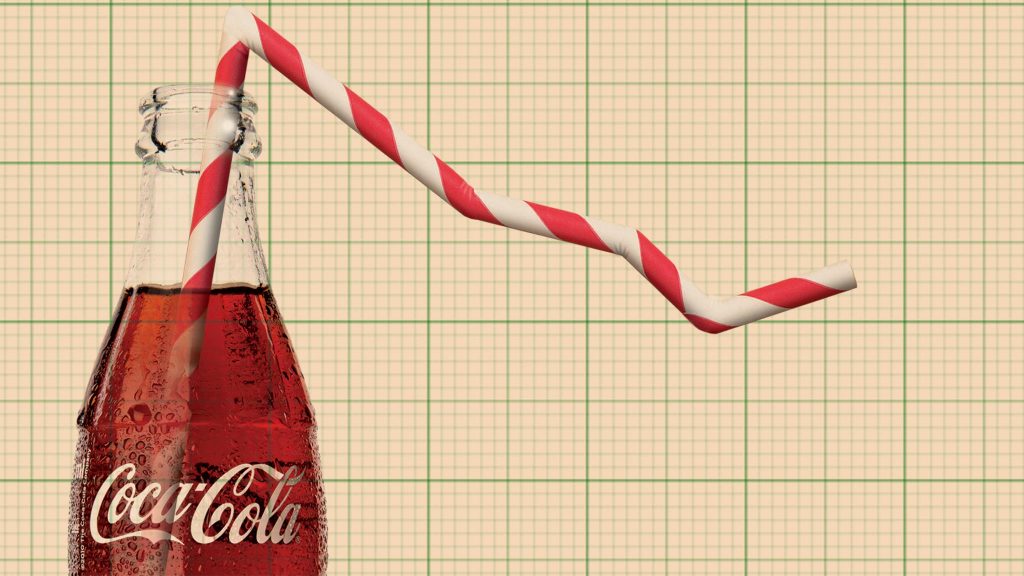
Coca-Cola Company FY 2014 Profits And Profit Margins
Of the $45.9 billion of Coca-Cola company total revenues in FY’14, $17.9 billion were the total cost of goods sold. These include Raw material costs- sweeteners, Metals, Juices and PET and costs related to the movement of finished goods from manufacturing locations to sales distribution centers. This resulted in $28.1 billion of gross profit and gross profit margin of 61.1%. Coca-Cola operating costs were $18.4 billion. These include Selling, general and administrative expenses (Advertising expenses, Stock based compensation expenses, bottling and distribution expenses and marketing expenses like in-store activations, loyalty points programs and point-of-sale marketing and other operating expenses (Productivity and reinvestment program, integration and restructuring initiatives). This resulted in $9.7 billion of operating profit and an operating margin of 21.1%. After interest and other non-operating income and expenses and income taxes, Coca-Cola had a net profit of $7.0 billion and a net margin of 15.4%.

